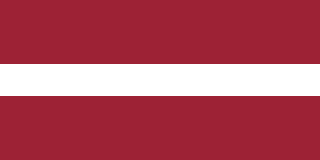Discover everything you need to know about Latvia as a strategic maritime country in the Baltic Sea. This article provides a comprehensive analysis of the Latvian maritime sector, including its major ports, infrastructure, geostrategic importance, as well as the economy and sea-related activities. An indispensable resource for maritime professionals and enthusiasts.

Explore the strategic ports and maritime infrastructure of latvia

Essential maritime information about Lielupe Port port for sea professionals

Essential maritime information about Engure Port port for sea professionals

Essential maritime information about Roja Port port for sea professionals

Essential maritime information about Mersrags Port port for sea professionals

Essential maritime information about Skulte Port port for sea professionals

Essential maritime information about Riga Port port for sea professionals

Essential maritime information about Liepaja Port port for sea professionals

Essential maritime information about Salacgriva Port port for sea professionals

Essential maritime information about Ventspils Port port for sea professionals
Explore the strategic ports and maritime infrastructure of latvia
Latvia, a Baltic country located between Estonia and Lithuania, has a significant maritime frontage on the Baltic Sea. This strategic position gives it a key role in maritime transport, navigation, and regional trade. The maritime sector is a major driver for the Latvian economy, significantly contributing to employment, industrial development, and exports. Understanding Latvia's maritime dynamics is essential for sector stakeholders and those interested in European marine geopolitics.
Latvia has several important ports that handle the transit of goods for the Baltic region and beyond. The port of Riga is the largest and busiest in the country, playing a fundamental role in international trade. It is well-equipped to handle various types of cargo, including containers, solid and liquid bulk, thanks to its modern infrastructure. Additionally, the ports of Ventspils and Liepāja are also crucial hubs, specialized in certain types of goods and fishing. These port infrastructures support a vast maritime industry encompassing logistics, handling, shipbuilding, and maritime services.
Besides maritime transit, Latvia is actively developing its activities related to fishing, aquaculture, and coastal tourism. The country implements strict maritime regulations in line with international standards to ensure maritime safety, marine environmental protection, and sustainable resource management. The Latvian government is also working to strengthen the resilience of its infrastructure against growing challenges related to climate change and marine pollution. Furthermore, Latvia's maritime strategy includes developing new sea routes, technological innovation in navigation, and improving sea rescue capabilities.